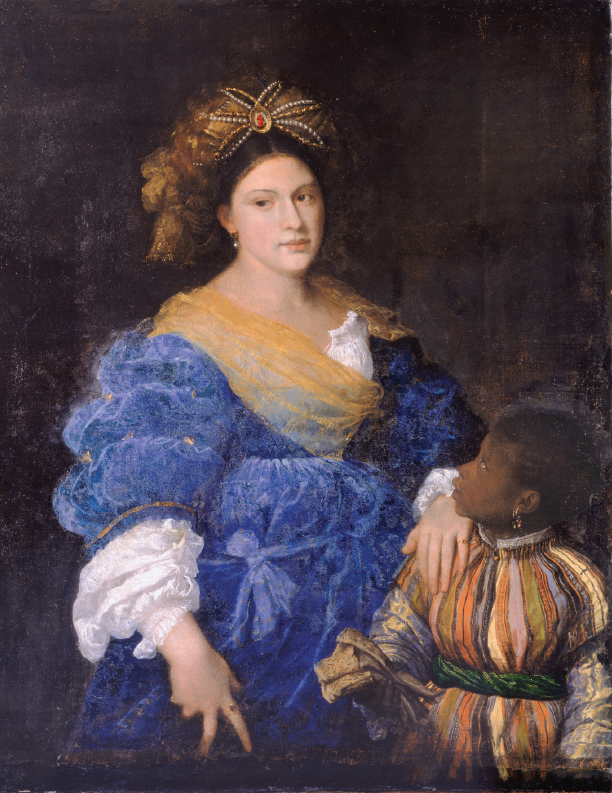Understanding World Societies:
Printed Page 428
> What were the key social hierarchies in Renaissance Europe, and how did these hierarchies shape people’s lives?

Laura de Dianti, 1523
The Venetian artist Titian portrays a young Italian woman with a gorgeous blue dress and an elaborate pearl and feather headdress accompanied by a young black page with a gold earring. Slaves from Africa and the Ottoman Empire were common in wealthy Venetian households. (Photographer: Human Bios International AG, CH-8280, Kreuzlingen, www.humanbios.com) > PICTURING THE PASTANALYZING THE IMAGE: How does the artist convey the message that this woman comes from a wealthy family? How does he use the skin color of the slave to highlight the woman’s fair skin, which was one of the Renaissance ideals of female beauty?CONNECTIONS: Household slaves worked at various tasks, but they were also symbols of the exotic. What other elements does Titian include in the painting to represent foreign places and the wealth brought to Venice by overseas trade? What does this painting suggest about Venetian attitudes toward slaves, who were part of that trade?
The Venetian artist Titian portrays a young Italian woman with a gorgeous blue dress and an elaborate pearl and feather headdress accompanied by a young black page with a gold earring. Slaves from Africa and the Ottoman Empire were common in wealthy Venetian households. (Photographer: Human Bios International AG, CH-
TTHE DIVISION BETWEEN THE educated and uneducated was one of many social hierarchies evident in the Renaissance. Other hierarchies built on those of the Middle Ages, but also developed new features that contributed to modern social hierarchies, such as those of race, class, and gender.